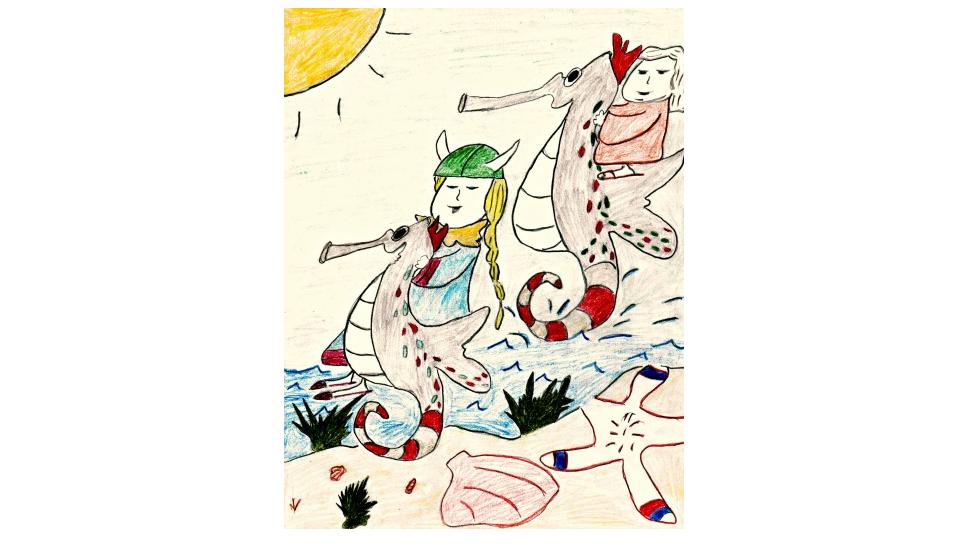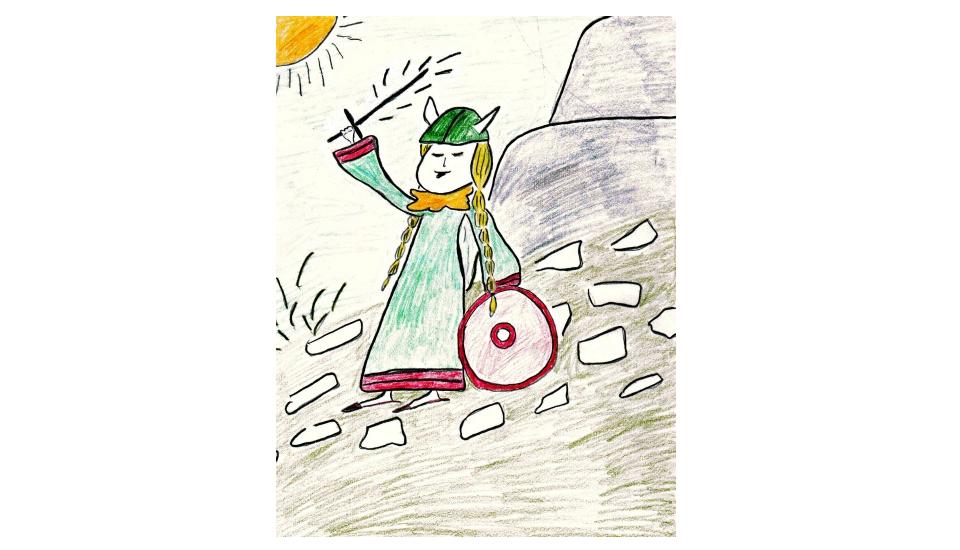
Spear Fishing with Viking and Hermit at Hermit Island Bay is not the usual spear fishing trip…
You can learn spear fishing too, and take a peek inside the spear fishing children’s illustrated adventure you can read in Book 1 & Book 2.
Here’s a little from the story…
“Hermit?”
“Yes, Viking.”
“Why must I learn to fish?”
“Because, you must learn to catch your food.”
“But, Hermit?”
“Yes, Viking.”
“You have many fish already, and can fish for us both.”
“So, why must I learn to fish, Hermit?”
“Because, you must learn to provide for yourself, and to not be dependent on me. What if something happens to me?”
“Hermit.”
“Yes, Viking.”
“I already know how to fish. I don’t need to learn how to fish.”
“You already know how to fish?… but you don’t know spear fishing on Hermit Island at Hermit Bay, do you?”
“No, Hermit.”
“Well, come then Viking…let me show you.”
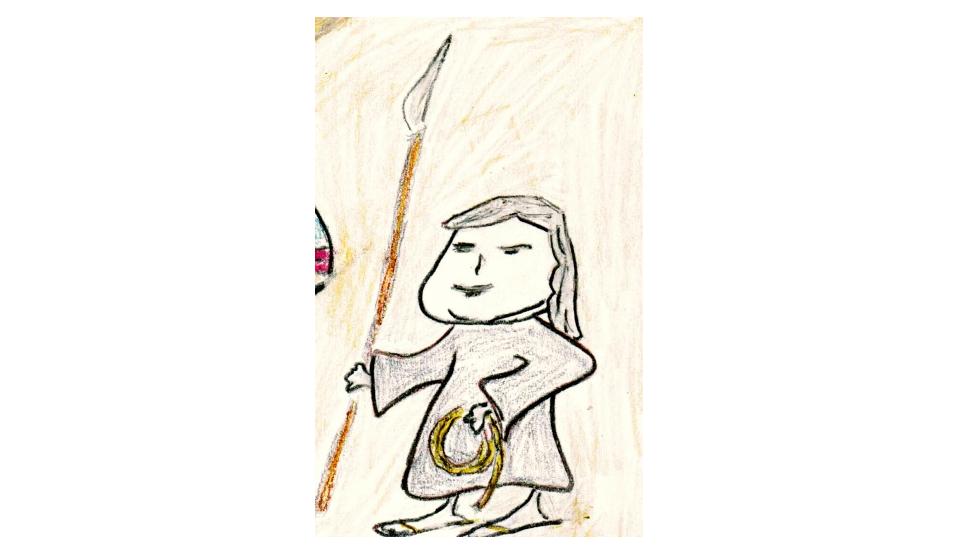
Diving from Above with a Spear:
Here’s a little more with Viking and her spear from Book 2…
Hermit?”
“Yes, Viking.”
“I see some fish below. Should I try to spear one?”
“You should certainly try, Viking. When Sasha comes down in the water, you must have your trusty spear ready at that instant.
You only have a split second to land, and spear your catch. I told you spear fishing is different here, didn’t I.”
Hermit smiles at her with a chuckle under his breath.
Viking looks at Hermit, squints her eyes and presses her lips with determination. Vikings lips then turn into a smirk.
“We shall see, Hermit…we shall see!”
…Sasha and Viking shoot down from the sky over the fish.
“There girl…now!”
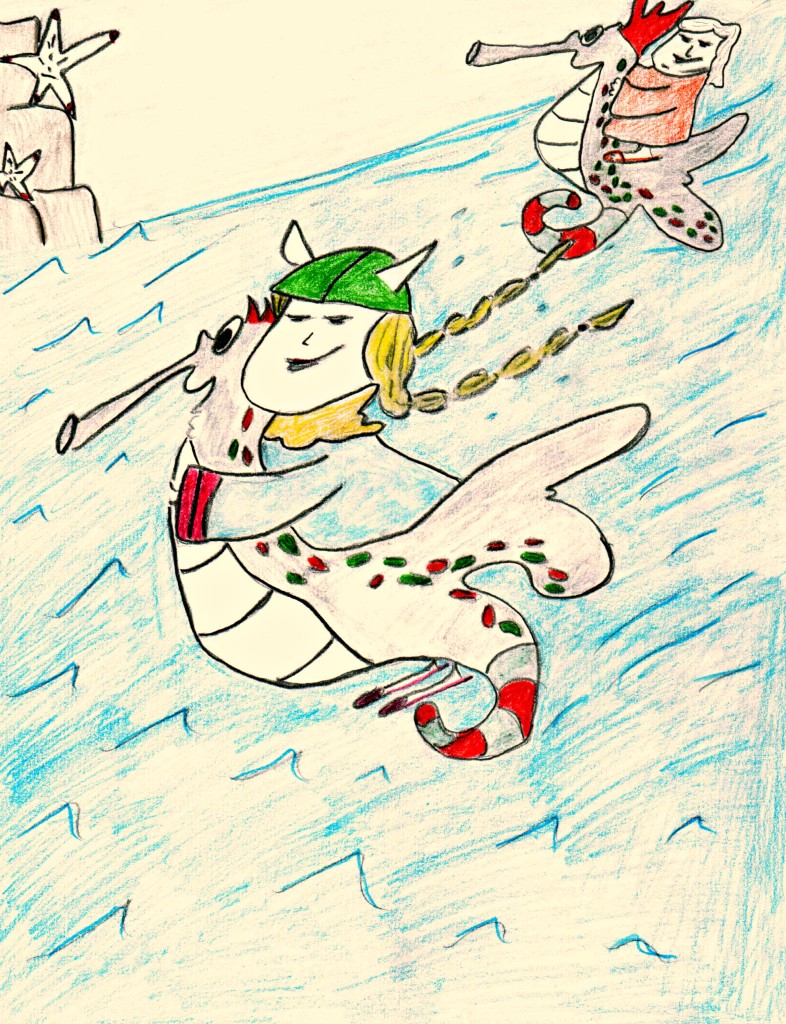
You can find out how Viking does with her spear fishing in Book 2: The Grabbas Are Coming.
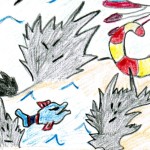 Learn Spear Fishing…
Learn Spear Fishing…
There is more to spear fishing than you think. Here are some interesting facts from Wikipedia…
Spear fishing is an ancient method of fishing that has been used throughout the world for millennia. Early civilizations were familiar with the custom of spearing fish from rivers and streams using sharpened sticks.
Today modern spearfishing makes use of elastic powered spearguns and slings, or compressed gas pneumatic powered spearguns, to strike the hunted fish. Specialised techniques and equipment have been developed for various types of aquatic environments and target fish.
Spearfishing may be done using free-diving, snorkelling, or scuba diving techniques. Spearfishing while using scuba equipment is illegal in some countries. The use of mechanically powered spearguns is also outlawed in some countries and jurisdictions. Spearfishing is highly selective, normally uses no bait and has no by-catch.
History of Spear Fishing…
Spearfishing with barbed poles (harpoons) was widespread in palaeolithic times.[1]Cosquer cave in Southern France contains cave art over 16,000 years old, including drawings of seals which appear to have been harpooned.
There are references to fishing with spears in ancient literature; though, in most cases, the descriptions do not go into detail.
The Greek historian Polybius (ca 203 BC–120 BC), in his Histories, describes hunting for swordfish by using a harpoon with a barbed and detachable head.[2]
In a parody of fishing, a type of gladiator called retiarius carried a trident and a casting-net. He fought the murmillo, who carried a short sword and a helmet with the image of a fish on the front.
Copper harpoons were known to the seafaring Harappans[3] well into antiquity.[4] Early hunters in India include the Mincopiepeople, aboriginal inhabitants of India’s Andaman and Nicobar islands, who have used harpoons with long cords for fishing since early times.[5]
 Did you know using a spear to hunt fish in the water was that old?
Did you know using a spear to hunt fish in the water was that old?
Viking and Hermit want you to come with them on their spear fishing adventure!
